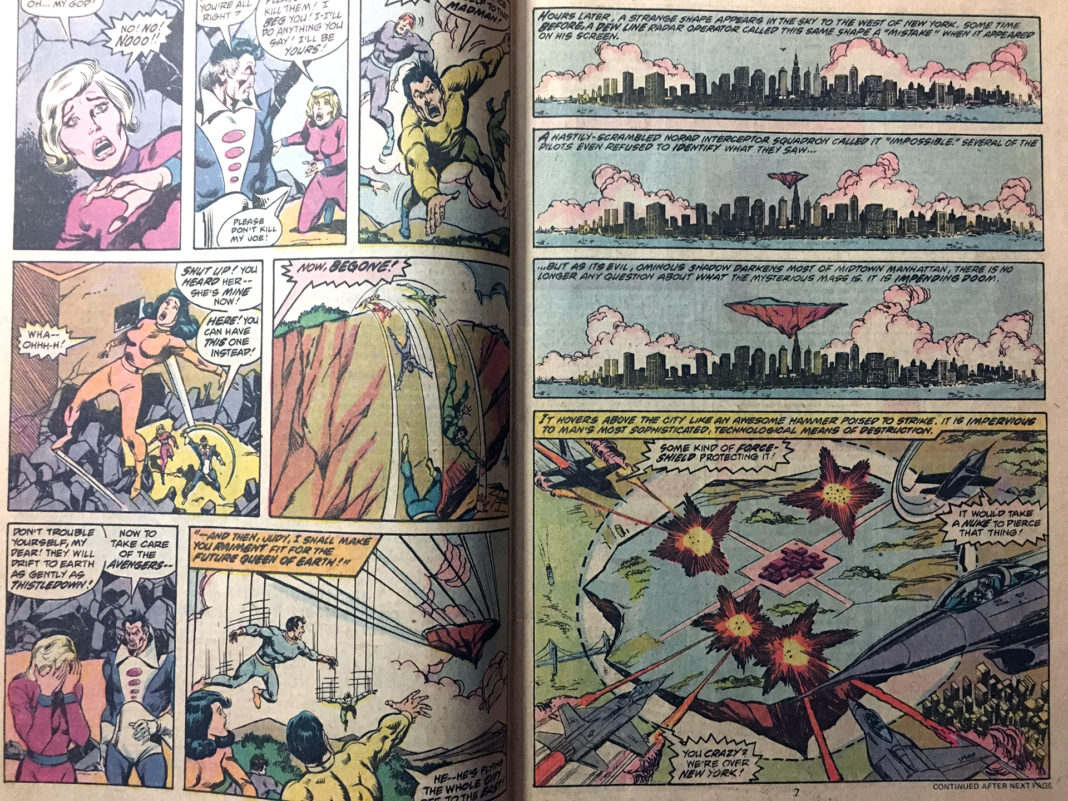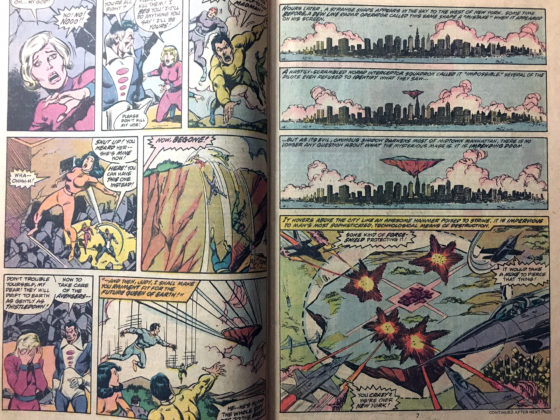It’s a funny thing for a man of my age to admit to having a favourite comic-book, but at this stage there’s little point pretending I don’t, writes Donal O’Keeffe.
“If you could just lie on the floor, covered in comic-books,” said the Irish Examiner photographer, “it’d make a great photo.”
When I demurred, he said: “Ah c’mon, it’s not like you’re running for Lord Mayor of Cork.”
“It’s not like I fecking can, now,” I replied, as I lay there with my fat face surrounded by old Avengers comics.
I was writing about having spent decades collecting comics and realising I had no great love for my former passion. I was proud of the piece accompanying the photograph of the precise moment my last vestiges of dignity evaporated, but I won’t be getting over that picture any time this century. As it happens, I worked with Eddie O’Hare again on Friday evening, and he laughed gleefully at the memory of encouraging me to make an even bigger clown of myself than usual.
Earlier that day, I had watched the new teaser trailer for the next Avengers movie and was thinking how far Marvel has come since I was a little kid reading their comics, and yet, I thought, how clearly that template was laid down half a century or more ago.
Tony Stark (Robert Downey Jr) is adrift in space, seemingly with no chance of rescue. Food and water ran out four days ago, and oxygen will be gone in hours. Using his damaged Iron Man helmet, Stark records a final message to his fiancé, Pepper Potts (Gwyneth Paltrow).
“Part of the journey is the end,” he tells her. The Marvel films have always been defined by their heart. Pretty much every super-hero film degenerates in the third act into a murky CGI slugfest, but the difference with Marvel’s films always tends to be that the emotional journey makes that indulgence bearable.
So impressive was the trailer, that NASA was moved to tweet some helpful suggestions for the shanghaied super-hero, recommending “ground teams use all resources to scan the skies for your missing man”. Ground teams are a bit pre-occupied back on Earth, with intergalactic terrorist Thanos having snuffed out half of all life in the universe. Nobody could ever accuse Marvel Studios boss Kevin Feige of lacking ambition.
Over the past decade, Marvel has built the most successful movie franchise in history, by 2017 earning approximately $13 billion. And it all started in 1939, in a dingy lower Manhattan office, with writers and artists paid pittances to produce knock-off characters. It was there Carl Burgos created the Human Torch, Bill Everett the Sub-Mariner, and Joe Simon and Jack Kirby Captain America, and there they laid the foundation stones of the Marvel Universe. Stan Lee tagged along, and in 1961, Kirby and he created the Fantastic Four. A year later, Steve Ditko and he created Spider-Man.
I came in sometime in the mid 1970s. American comics were a rarity back then, showing up randomly. The rumour persists that they were used as ballast on American ships. Once in a blue moon you’d see one, but mostly we had to make do with weekly British reprints. They were cheap digests which had coloured covers and black-and-white pages containing chopped-up sections of stories. You might have four or five pages of the start of a Spider-Man adventure, followed by the middle section of a Thor story, the end of a Hulk tale and a bit of a Doctor Strange. They were infuriating, but yet they acted as a strange gateway drug, and they only served to whet the appetite for the real thing.
And then you’d have a golden moment in Hanley’s in Fermoy, where you might find a lonely X-Men comic, or in Porter’s in Cork, where you might find an Avengers, or in Woolworth’s on Patrick Street where you might stumble upon the entire DC Comics output for June 1983.
I mentioned at the start that I have a favourite comic-book. I do and I don’t. I’ve interviewed John Creedon a bunch of times, some of them for this column, and John says he’s regularly asked his favourite song, and he says it’s a ridiculous question. He says his favourite song can change from moment to moment, and that’s as it should be.
I’m kind of the same with comics, in as much as I read them at all anymore. Most of those old Marvel and DC comics are preserved in plastic and stored in long boxes, but on the rare occasions I’ll dig them out, it’s mostly to appreciate the nostalgia of seeing old stories printed on caramel-smelling ancient paper. To be brutally honest, many of them are barely-readable to an adult.
But of course then there’s Neil Gaiman’s The Sandman saga, or pretty much anything by Alan Moore, especially V for Vendetta, or Art Spiegelman’s devastating Holocaust memoir Maus. Grant Morrison probably wrote the ultimate Superman story in All-Star Superman.
Comics are no longer just the preserve of pre-adolescent boys, of course.
But I do remember being ten or so, and sitting in the passenger seat of the family car long after my mother had gone in home.
I had found Avengers Number 159 in Porter’s in Cork. To this day, it enchants. It features a gorgeous Gil Kane cover depicting Thor, Iron Man and the Vision floating above a flying island, suspended above New York City. The Black Panther hangs from the cliff edge.
The thunder god tries to focus his lightening at the villain below, and asks “What power is this that challenges the might of THOR?!”
The villain wears a wide-collared onesie and sports a Van Dyke beard, a sure sign of a baddie. He stands before a pink-swimsuit-clad woman in a ridiculous crown.
He roars back: “The power of gravity gone wild, Avenger… the power of GRAVITON, lord of the fundamental force!”
Maybe I do have a favourite comic-book after all.












